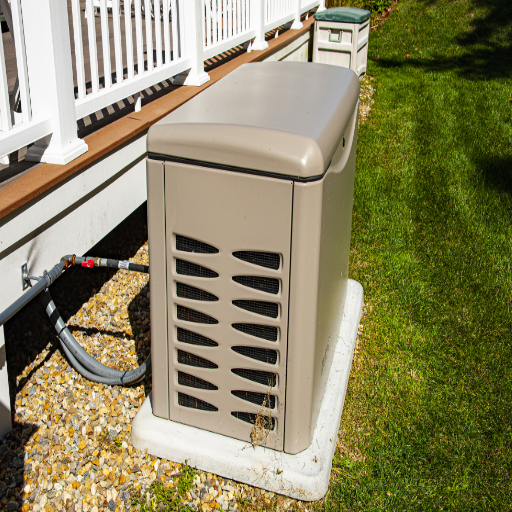Home standby generators are a critical investment for ensuring uninterrupted power during outages, especially in areas prone to severe weather or grid instability. This guide aims to provide a comprehensive framework for the installation process, focusing on the technical requirements, safety considerations, and critical planning steps to guarantee a reliable and efficient system. From selecting the appropriate generator capacity to understanding installation codes and maintenance practices, this article will equip homeowners and technicians with the knowledge needed to implement a generator setup that meets both their energy demands and regulatory standards. Whether you are considering a new installation or looking to upgrade an existing system, this guide covers the essential aspects to get you started.
What is a Standby Generator and How Does it Work?
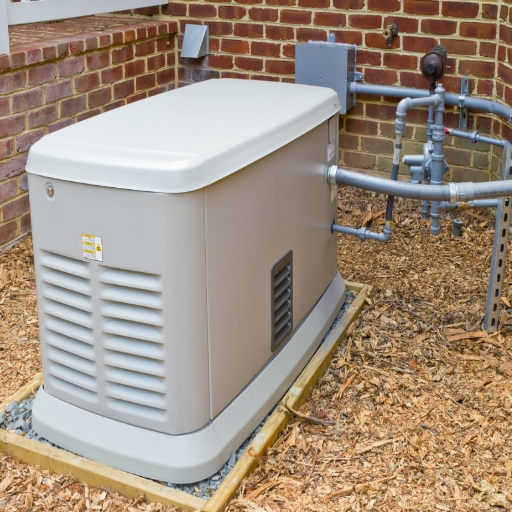
Understanding the Basics of a Standby Generator
A standby power system referred to as a generator is intended to deliver electric power during outages. The generator functions by sensing when an electric power interruption occurs and powering itself on to deliver power to selected circuits. The generator connects to either a propane supply tank or a natural gas line which fuels an internal combustion engine. This engine rotates an alternator to generate electricity.
Standby generators serve a specific purpose. They come in an array of power capacities with the smallest being 5 kW suitable for personal homes and the largest being over 150 kW reserved for commercial establishments.
- Economic and Political Consideration: Fuel Type and Supply Natural gas or propane are selected depending on accessibility, price, and storage considerations.
- Power Output: Power Output is expressed in Kilowatts (kW) and is determined according to the amount of electricity use the home or building is expected to have.
- Transfer Switch: Automatic or manual switches that ensure continuous use of either facility power or generated power.
- Engine and Alternator Specifications: Includes engine displacement, cooling system (air-cooled or liquid-cooled), and alternator voltage ratings.
These elements had to interact with each other for the desired outcome to be achieved and at the same time comply with local installation or regulatory standards.
How a Standby Generator Activates During a Power Outage
When a utility outage occurs, the standby generator system follows an outline so that power is restored without any issues. In most systems, the transfer switch notices the power outage and sends a signal to the generator to start. The response time to an outage is usually within 10 to 20 seconds to ensure minimal disruption.
First, the generator engine starts. Then, the engine stabilizes at the required operating speed. It uses technical parameters like displacement (i.e. 2.4L or 4.5L for residential and commercial models) and cooling type (air-cooling for smaller units and liquid-cooling for higher-capacity models). The alternator inside the generator system produces the required power. For residential use, it is commonly set between 120-240V and can be set as high as 480V for large-scale commercial setups.
At the same time, the transfer switch disconnects the facility from the utility grid. It allows the generation of power to be routed to the building‘s electrical circuits. This mechanism ensures that there is no risk of backfeeding and that all delivery of power complies with safety and regulatory standards.
The system will continue to operate in this mode until the utility power is restored. Once grid power is stable, the transfer switch reverts to using utility power, and the generator automatically powers down, returning to standby mode. This entire process relies heavily on precise electrical and mechanical coordination to maintain efficiency and safety.
Key Components of a Standby Generator System
- Generator Unit: The primary power generator through the conversion of mechanical energy to electrical energy. Power generators are usually set in motion by internal combustion engines operating on diesel, natural gas, or propane. Basic characteristics detail the generator output, in kilowatts (kW), frequency, and voltage output.
- Automatic Transfer Switch (ATS): This vital component guarantees the interface between utility power and the generator power to be automatic. It compares the incoming utility supply through its voltage and frequency and switches to generator power in the event of power failure.
- Fuel System: Supplies the generator’s engine with fuel continuously. Typically consists of a fuel container, pumping device, and lines. Tank capacity, in gallons or liters, fuel consumption, in gallons per hour, and fuel pressure while flow is important to function the system effectively and reliably.
- Cooling System: Maintains the generator’s operating temperature while dissipating heat produced by the engine. Key features will include cooling capacity, coolant type, and flow rate. It is often provided together with radiators or even sophisticated liquid cooling systems.
- Control Panel: Functions as the interface for the monitoring useful in controlling the standby generator system. It shows real-time data concerning key operational indicators like voltage, current, engine frequency, and performance. Most modern control panels also have programmable features which include remote monitoring through network interfaces.
- Battery and Start System: Enables the generator to start functioning. Electric start mechanisms are categorically connected to battery systems where critical factors such as voltage, stuffed in 12V or 24V DC as well as CCA or cold cranking amps aid to facilitate reliable function in poor conditions.
These components collectively ensure the standby generator system operates safely, efficiently, and reliably, meeting the power demands during unexpected outages.
Why Install a Home Standby Generator?
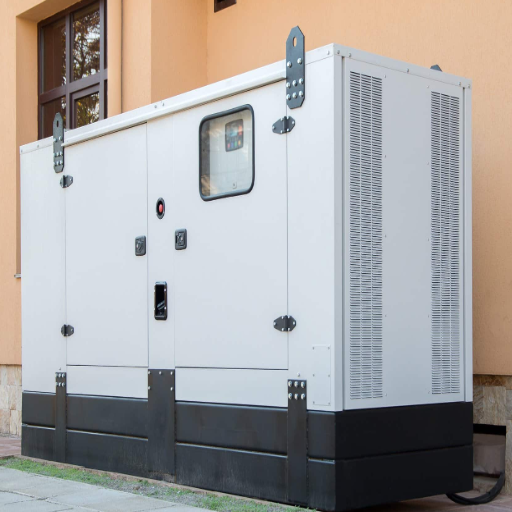
Benefits of Having a Home Standby Power Source
In a world where power outages are all too common, having a home standby generator enables critical equipment such as heaters, refrigerators, and medical tools to function without interruption. One of its notable features is that it can operate completely on its own, thanks to the automatic transfer switch (ATS) that is commonplace in most households. In cases of grid failure, the ATS automatically activates the generator and cuts off power from the grid.
The most important one is the rated power of the generator, which should reflect the needs of an average house. The standard for most homes is between 7-20kW. The generator must be able to sustain essential loads like the HVAC systems (3-5 kW), refrigerators (700 W-1 kW), and lighting (500 W-1.5 kW). Additionally, the device must be able to easily integrate with appliances which normally require a voltage of 120/240V AC.
Options like diesel, propane, and natural gas should be considered while maintaining flexibility on fuel type. For homes, propane and natural gas are favored because of the cleaner combustion processes and active supply lines. Also, with fuel usage rates that can vary between 0.5 to 3 gallons per hour, runtime sustainability is primarily dictated by the fuel supply on hand.
A generator paired with a proper ATS can ensure additional safety to your home while offering reliable electricity. Propper specifications will allow the generator to function without compromising the rest of the household functions.
Comparing Standby Generators to Portable Generators
For specific applications, comparing portable to standby generators requires an assessment of various conditions.
- Power Output: While portable generators provide from 1 kW to 15 kW, enough to power a few small appliances, standby generators range from 7 kW to over 150 kW which is sufficient for entire commercial operations or vehicles.
- Installation: Unlike portable generators which only require the manual setup of being plugged in, standby generators come with an automatic transfer switch (ATS) and require professional installation to integrate them with the home or business electrical systems for a seamless transition of power.
- Fuel Sources: The primary fuel for portable generators is gasoline or diesel, while natural gas or LPG is used in standby generators due to ready availability. This leads to differences in impact sustainability since portable generators generally result in higher emissions.
- Usage and Portability: Standby generators are designed as static devices meant to provide long-term backup power at pre-defined locations. On the other hand, portable generators are multi-purpose devices, equipped with wheels or handles and are intended for versatile applications like remote sites, short-duration activities, or emergencies.
- Operational Automation: Standby units are active during a power outage with little or no human participation. This contrasts with portable generators which require users to start the device and connect it, which invariably delays power restoration.
- Cost Consideration: With the range of $2,000 to $20,000 (with installation) and costly upfront expenditure, standby generators provide executive and automated solutions. Portable generators, on the other hand, possess a lucrative mark of $300 to 2000, but demand more manual effort and have low capacity.
The available range of generators serves different purposes. Standby systems work best for critical applications for long-term dependent serving scenarios, while portable units are champions of flexibility and cost-saving for temporary situations. Accurate assessment of needs, ky requirements, operative preferences, and time of runtime duration all serve as the final deciding factors.
Identifying Your Home’s Power Needs for a Standby Generator
I must determine what systems and devices I want to power during an outage to calculate my home’s power requirements for a standby generator. This involves the basics such as lighting, HVAC systems, refrigerators, and other medically-related apparatus. Everything has to be estimated on a microwave level to accurately provide power requirements.
- Starting Wattage: Refrigerators and air conditioning are just some examples of devices or appliances that require extra power for a brief moment when powered on. I will figure out which of my appliances have the highest surge wattage and add it to the estimated power requirement of the generator.
- Running Wattage: This refers to the power needed to continuously operate appliances and devices. I want to try and power many appliances all at once so I will make a running wattage of every appliance that I want to use while my device is turned on.
- Power Prioritization: I need to choose if I want to power the main area of the home or if I want to only power critical areas. For whole-house coverage, a larger generator, typically rated at 15 kW to 22 kW, may be necessary. A smaller unit can be enough for specific devices (e.g., 5 kW to 10 kW) and circuits.
- Fuel Source Compatibility: Natural gas and propane are the two most used fuel sources for standby generators. I want to ensure that the fuel source supports the device while also matching the current setup inside my home.
Through the precise load analysis that I have executed, I can now select a generator that captures adequate capacity without the isk of overloading or being underutilized, maximizing reliability and efficiency at the same time.
How to Choose the Right Generator for Your Home
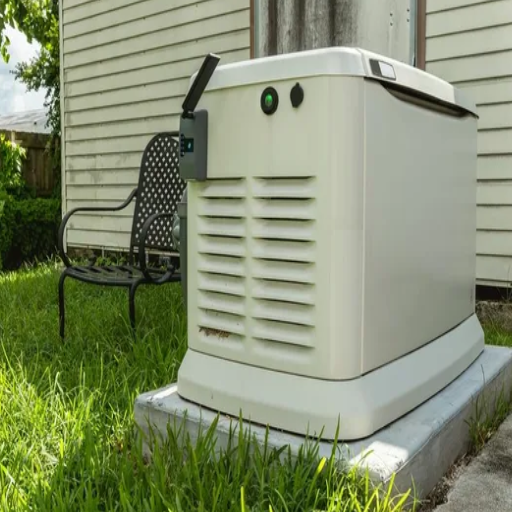
Assessing Generator Power Requirements
I begin by examining the appliances and systems that are most relevant to me before I make a plan for the generator capacity needed to power them. This includes a refrigerator, an HVAC system, a sump pump, and lighting circuits. For each device, I consider both the running power (in watts) and the additional surge power for startup.
- Refrigerator: Consumes 600 watts (running) with a startup surge of 1,200 watts.
- HVAC System: Depending on size it may require 3500 to 5000 watts running plus as much as 6500 watts startup.
- Sump Pump: Runs using 800-1000 watts and starts up using 1200-1500 watts.
- Lighting Circuits: Standard circuits may draw approximately 300-400 watts depending on usage.
The sum of these values equates to the estimated generator capacity needed. To improve reliability, a margin of 20-25% is top of the total figure as small inefficiencies or further appliances not catered for may come up, and this means if for example, the total used is 7000 watts, the generator used needs to be set at 9,000 watts. Without overloading or underutilizing the generator I can ensure that it operates as intended.
Factors to Consider in Generator Placement
When I am looking for a suitable spot for a generator, there are several considerations I make about safety features, efficiency, and compliance with technical standards:
- Ventilation: Proper generator placement enables restraining overheating whilst maintaining airflow and exhaust dispersal. As the guidelines from the manufacturers state, I tend to position the generator a minimum of five feet away from any structures, and windows, doors, and vents are always out of the vertical exhaust.
- Elevation: Besides adequate airflow, I place the generator on an elevated, leveled, and stable surface to avoid any potential flood levels, particularly in areas that are known for heavy rain. This averts destruction from water and guarantees proper functioning.
- Clearances: On every side of the generator, NFPA regulations suggest keeping a simple clearance distance of 3 feet for appropriate maintenance and safety access. With this, the possibility of over-restriction of movement air is alleviated, and therefore, overheating possibilities are reduced.
- Noise Levels: In residential locations, I position the generator in areas that have elevated barriers that absorb noise. The aim is to minimize disturbances and sound output from the generator is also accounted for.
- Fuel Source Proximity: For better performance, the generator is placed at an appropriate distance from its fuel source, for example, a propane tank or a natural gas line. Easily accessible and secure connections are provided without unnecessary long pipes which decreases pressure and the possibility of efficacy.
The selected location must enable easy connectivity with the transfer switch, free from the use of long extension cords that pose safety risks and could potentially create voltage drops. A safe grounding point is also crucial to mitigate electrical faults. Ensuring all the aforementioned factors assist in achieving safe and regulatory-compliant operation of the generator.
The Installation Process: What to Expect
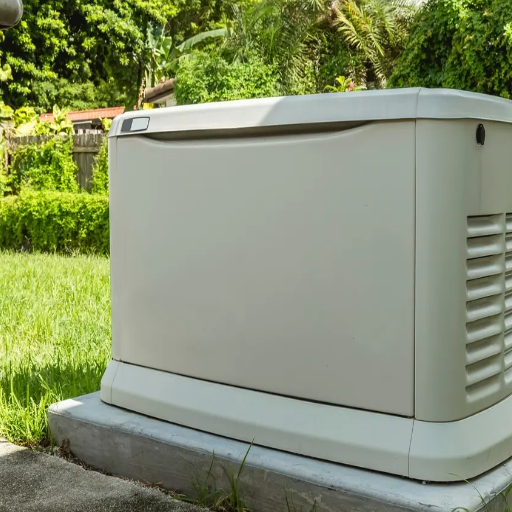
Preparing Your Home for Generator Installation
Before I start the process of putting the generator in my home, there are a few important preparations I have to make regarding its effectiveness, safety, and adherence to the electrical code regulations. The first step I have to take is deciding on the installation site for the generator. The installation site should be outdoors, well ventilated, and positioned at least 5 feet from doors, windows, and vents to avoid the construction of carbon monoxide. The site itself also needs to be level and non-combustible like concrete or a gravel pad to securely able the unit and lessen vibration.
Second of all, I have to determine whether the output power of the generator is compatible with the electrical load of my home. For Example, if the total wattage of your critical load appliances in the home is 7,000 watts. Then the generator should have an output capacity of about 7,500 – 8,000 watts. Moreover, I need to figure out the appropriate type of fuel to use, like natural gas or propane, while also ensuring my home can acceptably supply or store a sustained supply line or tank to enable operation during long outages.
Finally, I must consult with a qualified electrician so that a properly rated transfer switch can be installed. The transfer switch which ranges from 50 to 200 amps must correspond with the main electrical panel for the get home. Properly set up, this system enables optimal and safe interchanging of utility and backup power while also eliminating hazardous backfeed into the grid. These considerations are taken into account, and I will be ready for the entire generator installation process.
Steps Involved in Standby Generator Installation
To start the process of installation, I need to calculate the electrical load that my house would face during an outage. This involves estimating critical loads such as HVAC systems, refrigerators, lights, and other key devices. A rule of thumb is that the starting and running wattage of these devices should be summed to determine the generator size needed. For example, if the required power is between 9 kW and 22 kW, I will purchase a standby generator of the appropriate size.
Once my load requirements have been calculated, it’s time to select the fuel source. This can come from natural gas, propane, or diesel based on what is available and convenient for my location. Based on consumption rates and generator size, propane tanks typically range from 250 – 1,000 gallons. The same goes for natural gas, but a gas line must be available with the required flow rate which is typically in BTU/hr or CFH. I will ensure that the generator’s fuel consumption specifications and infrastructure match the source that I have selected.
Next, I will look for a suitable site for installation. NEC (National Electrical Code) stipulations and local jig laws specify that said generator needs to be on firm ground, a minimum of 5 feet away from windows, doors, vents, and structures. It also needs to be positioned on a concrete block or composite pad for support and stability.
After this, an appropriately rated automatic transfer switch needs to be installed. If, for instance, my main electrical panel is rated 150 amps, I will buy a transfer switch of the same rating. This ensures compatibility and safety. This appliance is essential to prevent dangerous backfeed by automatically switching between utility and standby power.
Once these steps are checked, an electrician can wire and test the system. This involves connecting the generator to the LS load bank through the transfer switch and ensuring the load is optimally distributed. I shall also ensure that the generator is serviced as directed by the manufacturer, including regular oil changes every 100 -200 hours, or annually, whichever comes first. This organized approach will guarantee ease of use, efficiency, and compliance when installing the standby generator.
Understanding Installation Costs and Budgeting
Some of the factors that determine the installation costs of standby generators are, site preparation tools needed, generator capacity, and labor charges. For example, there is a direct correlation between the price and a generator’s ability to sustain electrical load measured in kilowatts (kW). Units with larger capacity, say 20 to 50 kW, cost more. Site preparation costs may include installing stops, passing local utility company codes, and dealing with zoning laws. The complexity of the wires, connecting the system to an automatic transfer switch, also impacts the cost of labor.
- Generator Unit: Costs range from $2,000 for small residential units (7-10kW) to over $10,000 for more powerful commercial-grade units (20-50+kW).
- Transfer Switch: The price range for an operational safety switch is typically between $500 and $2,000 depending on the amperage rating 100 to 400 amps is common.
- Labor and Permits: The average cost of professional installation is $1,000 to $5,000 while permits have a range of $50 to $500 based on local laws.
- Additional Equipment and Modifications: These include fuel connections pumps natural gas or propane, concrete pads, and possible electrical upgrades which range from $500 to $3,000 altogether.
Through the detailed examination of each factor, I rationalize the technical aspects of every element in my budget and comprehensively plan for its allocation. Every factor enables the standby generator system to operate safely, accurately, and efficiently.
Maintenance and Care for Your Home Standby Generator
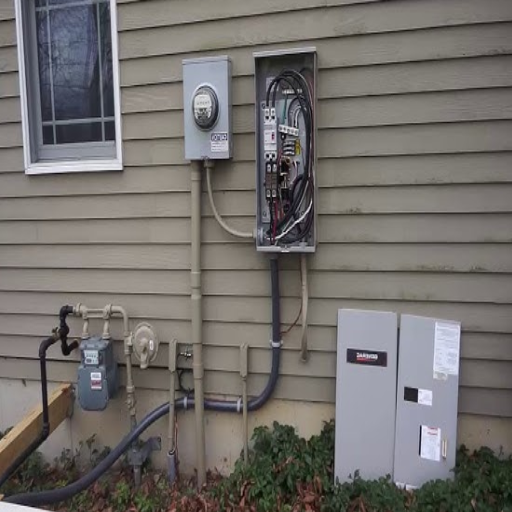
Regular Maintenance Practices for Backup Power Systems
Maintaining a self-starting generator requires precise measures to be taken after a certain duration of time, sometimes varying by the recommendations of the manufacturer of the generator. This is how it is done:
- Change of Oil and Filter: Based on the suggestion of the manufacturer, I routinely change the oil and filter after a particular duration of approximately 50 to 200 hours of operation. This goes a long way in ensuring that the engine gets the required amount of lubrication and that the excess wear and tear on the engine is minimized.
- Examination of the Fuel Connections: I conduct an annual inspection of the propane or natural gas tanks, examining for any possible leaks, corrosion, or blockages. This goes a long way in guaranteeing that safety standards and the overall efficiency of the generator are ensured.
- Maintenance of the Battery: As a standard practice, I conduct regular tests of the battery voltage and consistent charge for reliable start-up every 6 to 12 months. This is crucial in ascertaining that the voltage is capable of matching the specifications in the owner’s manual.
- Replacement of Air Filter: Depending on the environment the engine is used in, I change the air filters after 100 to 200 hours of use or more regularly if there are adverse conditions. Adequate airflow enables the engine to not get clogged.
- Load Testing: Performing periodic load testing verifies whether the generator is capable of sustaining the expected electric load, usually expressed in kilowatts (kW), and whether it operates within its range of capacity (e.g. 20-50+kW for higher commercial units).
This ensures the maximum lifespan of the generator, minimum risk of malfunctioning, and ensures compliance with the ‘Technical Regulations’ for safety and health. By completing these tasks, I make certain that the backup power system is reliable during critical times.
How to Ensure Your Generator is Ready for an Outage
To have my generator prepared for an outage, I follow a systematic maintenance and testing routine based on key technical:
- Inspection of Fuel Quality: For diesel systems, I verify that the fuel level is adequate and the fuel is clean from contamination. For diesel generators, I ensure the fuel meets ASTM D975 specifications to avoid operational difficulties from fuel that is degraded or contaminated.
- Check For Battery Condition: I utilize a multimeter to check the battery voltage which should be approximately 12.6 to 13.2 volts for a 12V battery system. I clean any stains caused by corrosion and check the electrolyte levels.
- Testing with Operational Load: I monitor the loading of the generator during the load bank test to ascertain that it is capable of sustaining the rated output load. If the generator is rated for 30 kW, I simulate this load to confirm stability under operational conditions. As prescribed by NFPA 110, load tests are completed on standby power systems at specified intervals.
- Checking Oil and Filter: Following the prescribed operating and oil type, I determine how clean the oil is and its level, changing it after each use between 100-250 hours of operation. Wear history, as well as other factors, have to be considered. For example, synthetic oils tend to increase intervals between services.
- Transfer Switch Examination: The automatic transfer switch (ATS) is inspected for reliable switchovers during outages. Important measures are voltage sensing thresholds (e.g., below 90% of nominal voltage for start conditions) and time delays for transfer ( generally 10-30 seconds).
- Systematic Check Operations: I conduct no-load or partial-load operations on a weekly to bi-weekly basis, enabling me to carry out “overhead” drills on the equipment can capture faults before a real emergency.
By compliance with the aforementioned steps and meticulous adherence to technical norms, I remain confident that I will be able to rely on my generator during an outage.
Reference sources
Frequently Asked Questions (FAQs)
Q: What is the cost of installing a whole-house generator?
A: The cost to install a whole-house generator can vary widely depending on the size of the generator, the complexity of the installation, and your location. On average, installation costs can range from $3,000 to $5,000, excluding the price of the generator itself.
Q: How does a transfer switch work with a home backup generator?
A: A transfer switch is essential for safely connecting a home backup generator to your home’s electrical system. It automatically disconnects the utility power when it fails and connects the generator power to the home, ensuring a seamless power supply when the power goes out.
Q: What is the best place to install a standby generator?
A: The best place to install a standby generator is usually outside your home, at least 5 feet away from windows, doors, and any air intakes. It should be on a stable, level surface and comply with local codes and manufacturer recommendations.
Q: Can a whole house generator power my entire home?
A: Yes, a whole-house generator is designed to provide enough power to run your entire home, including essential systems like heating, cooling, and appliances, ensuring comfort and safety during an outage.
Q: How does a home backup generator work during a power outage?
A: A home backup generator automatically detects a power outage and starts up immediately. It then transfers the electrical load to the generator, ensuring that your home remains powered until the utility power is restored.
Q: How does installing a generator affect my home’s electrical system?
A: Installing a generator involves integrating it with your home’s electrical system, usually through a transfer switch. This setup allows the generator to safely provide power during an outage without back-feeding into the utility grid.
Q: What should I consider before installing a backup generator?
A: Before installing a backup generator, consider factors such as the size of the generator needed to power your home, the cost of installation, fuel type, and local zoning laws. Consulting with a professional can help you make an informed decision.



